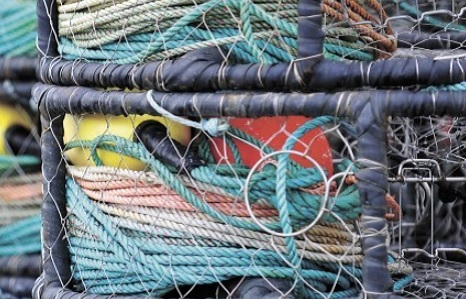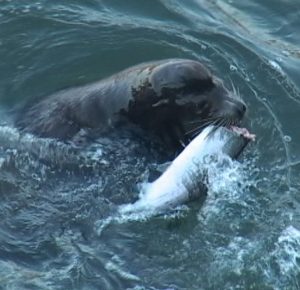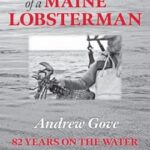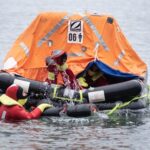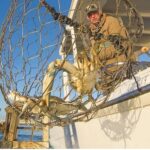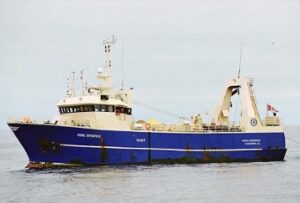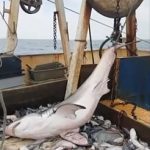Category Archives: Pacific

One of nature’s miracles: the salmonid species life cycle
This article describes the amazing way these species begin their lives in clear flowing creeks and streams near the coast, anywhere from the northwest to Northern California, travel miles downstream to enter the salty waters of the Pacific Ocean, mature for a number of years while traveling great distances, and then return to their home stream’s birthplace. At the beginning, the following verse from a popular illustrated children’s text titled Salmon Stream sets the scene: The egg of a salmon, born to travel, Hides in the nest of rocky gravel, Far beyond the shady pool,,, >click to read< 20:02
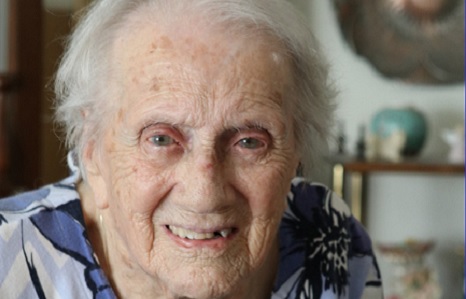
Happy 105th Birthday, Esther ‘Essie’ Lindeman
Born Sept. 15, 1915, Esther “Essie” Lindeman of Grants Pass experienced WWI as an infant, the Spanish flu pandemic when she was 3, reached adolescence during the Roaring ’20s and adulthood during the Great Depression in the 1930s. Most innovations that touch every aspect of our daily lives didn’t exist when Essie was growing up on a dairy farm in upstate New York. Radio was in its infancy, television was in the future, and the Internet and social media were unimaginable. Another interest crept into Essie’s life in the ’30s. A neighboring farm boy she “sorta liked” had left home for a commercial fishing adventure on Bristol Bay in Alaska.,, Happy Birthday, Essie! >click to read< 10:21
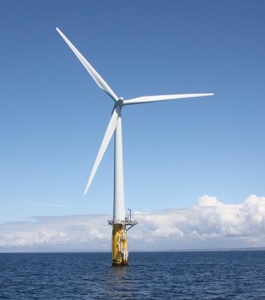
Offshore Wind Will Deliver Few U.S. Jobs; Lack of Oversight Means Most Jobs Will Be Overseas
New developments have raised serious questions regarding the economic and job benefits from offshore wind energy projects in U.S. waters. Unsubstantiated claims of significant economic growth and investment have exaggerated the benefits of offshore wind energy, and diminished the economic and cultural importance of sustainable American wild-caught fisheries. A new study, conducted by Georgetown Economic Services (GES), finds that “[t]he claim that the huge investments in offshore wind would provide significant job and economic benefits in the U.S. has been grossly inflated.” The study also reaches an important conclusion: many of the jobs and benefits would actually go to the foreign-owned companies currently dominating the wind energy landscape, instead of creating local opportunities. >click to read< 15:45
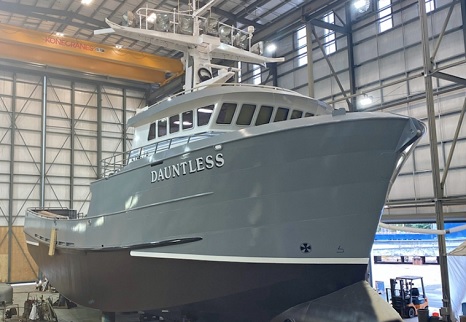
A Stunning Transformation: More Than a New Shell
Like many fishermen, Justin Yager has a strong interest in responsible harvesting. Similarly, he saw the common sense of rebuilding the Gulf shrimper BJ Thomas after the boat had a serious fire at Newport, Oregon. Built in 1976 at Marine Builders in Mobile, Alabama the boat found its way to the west coast where Justin’s wife, Sara’s grandfather, owned it for some time before selling it on to the next generation. Justin fished the boat for a few years with the crab and shrimp permits that the couple also purchased from Sara’s grandfather. The fire was the impetus for the rebuild that the owners had planned for the boat. ‘We cut off the bow, part of the stern, and the house. We took it right down to the engine room and the fish holds he explained. photos, >click to read< 12:05
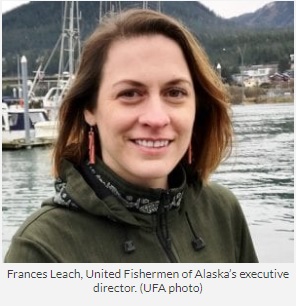
Seafood Trade Relief Program: USDA tweaks farm assistance program to fund fishermen hurt by U.S. China trade war
Jeremy Leighton is a dive fisherman based in Ketchikan. But it’s not just geoduck fishermen. Frances Leach heads up United Fishermen of Alaska, a fishing industry group. “China seems to be one of the biggest markets for a lot of our seafood products in Alaska. And not just buying them for consumption, but also processing. We send a lot of seafood over to China to be processed,” Leach said. Now, Leighton and thousands of other U.S. fishermen could be eligible for a new program designed to help fishermen hurt by the tariff on seafood. It’s an Agriculture Department initiative called the Seafood Trade Relief Program. U.S. Sen. Dan Sullivan said it’s a new twist on an old trade war strategy. “There have been long standing U.S. Department of Agriculture programs that provide relief to farmers, when their products exported are hit with retaliatory tariffs,” Sullivan said. >click to read< 10:21

BP, Equinor Partner to Develop Offshore Wind Farms off New York, and Massachusetts
Two of Europe’s largest oil companies will develop offshore wind projects jointly in the U.S. in yet another example of energy giants migrating towards the development of renewables. Equinor of Norway, and has entered into an agreement to sell a 50% stake in two of its U.S offshore wind farm projects to Britain based BP for $1.1 Billion. Empire Wind, located just southeast of the Long Island coast, spans 80,000 acres, with water depths of between 65 and 131 feet. Beacon Wind is located 20 miles south of Nantucket, Massachusetts, and covers 128,000 acres. >click to read< 15:40
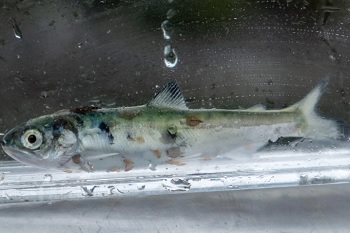
New Study – B.C. Salmon farms regularly under count sea lice, potentially putting wild salmon at risk
The study shows mandatory sea lice counts performed by the operators of the fish farms drop by between 15 and 50 per cent when they’re not being done during an audit by Fisheries and Oceans Canada (DFO). “That isn’t really a minor effect. This is a pretty obvious result,” said lead researcher Sean Godwin, who conducted the research for his PhD at Simon Fraser University. Salmon farms are required to perform monthly counts of the sea lice on their fish and make those numbers publicly available. The counts are self-reported, but fisheries officials perform occasional, pre-arranged audits to make sure the numbers are accurate. If the lice counts pass a certain threshold, the operators are required to pay for delousing treatments. >click to read< 15:59
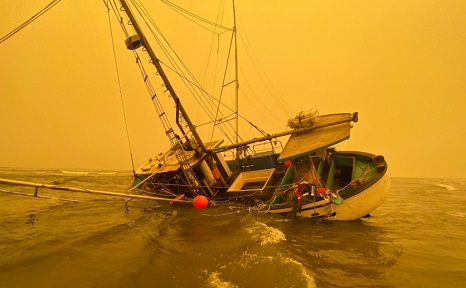
Coast Guard crew rescues fisherman from surf near South Beach State Park
A Coast Guardsman swam from shore to rescue a fisherman from the surf near South Beach State Park early Tuesday morning after his vessel ran aground and began taking on water. The fisherman was forced to abandon ship after the vessel began breaking apart in 10-foot surf. At approximately 11:40 p.m., Coast Guard Sector North Bend watchstanders received the initial mayday call from a fisherman over VHF-FM radio. The lone mariner aboard a 44-foot commercial fishing vessel, F/V Legend, Commercial Fisherman Matt Davney requested assistance, reporting he was on the south jetty at Newport. >click to read< 14:53
Coast Guardsman swims from shore to rescue mariner south of Newport – A Coast Guardsman swam from shore to rescue a fisherman from the surf near South Beach State Park early Tuesday morning after his vessel ran aground and began taking on water. The Coast Guard said the fisherman was forced to abandon ship after the vessel began breaking apart in 10-foot surf. 3 photos, >click to read< 10:36
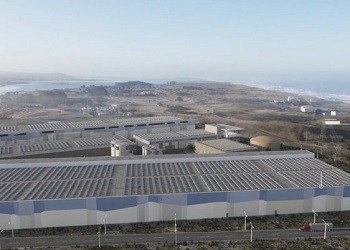
Nordic Hosting Public Zoom Meeting Wednesday taking questions, Study Results for Land-Based Fish Farm
Nordic is currently preparing its permit applications for a land-based aquaculture facility on the Samoa Peninsula in Humboldt County and has recently submitted the discharge permit applications to the Water Quality Control Board and the Coastal Commission. As part of these applications, a Dilution Study and a Marine Resources Impact study were conducted. Environmental protection is at the core of Nordic Aquafarms’ vision and Nordic is pleased to share the results from these studies. On Wednesday, September 9 at 6 p.m., Nordic will present study results, a general project overview and take questions from the audience,,, for details, and log in information, >click here< 13:57

Federal judge rules fishery managers failed to prevent overfishing of northern anchovy
A federal judge has ruled that the National Marine Fisheries Service (NMFS) must go back to the drawing board and redo the catch limit for northern anchovy — an important food source for whales, sea lions, brown pelicans, and salmon. Judge Lucy M. Koh ordered the agency to issue a new rule within 120 days that accounts for the drastic fluctuations in anchovy populations and prevents overfishing when the stock is low. >click to read< 09:33
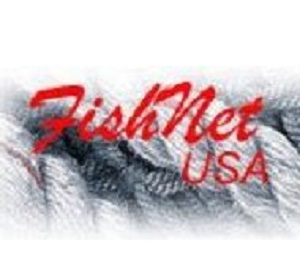
Nils E. Stolpe/FishnetUSA – NOAA Fisheries Coronavirus (COVID-19) Update
Well, first we have this reassuring (at least if you’re not that familiar with the capacity of NOAA Fisheries to get it really, really wrong!) statement that “NOAA Fisheries is actively monitoring and adjusting to the COVID-19 national health crisis”. Nothing to worry about, right? Well, not quite nothing. While I’ve seen nothing official, word on (at least some of the New Jersey) docks is that, in spite of the ongoing and very possibly worsening national Covid-19 health crisis, the mandatory on-board observers are back in force and demanding rides.,, It seems like just about anything that might involve NOAA/NMFS employee exposure to Covid-19 has either been cancelled or public participation has been severely restricted or eliminated. >Click to read<17:12
Good Morning! We celebrate our eighth birthday today.
Good Morning! It’s our birthday today. We’ve calculated some statistics from the back side of the website, to give a little insight Into the past eight years. In the past eight years, we’ve had 8,186, 234 visits. Our best day ever, 72, 221! We’ve posted 27, 725 posts, which are trails to articles collected daily, inventoried, categorized, and shared around the globe. We have tried to provide an accurate snapshot of the industry, continuously updated, daily, for eight years, which is ninety six months, and an average of 289 posts per month, which comes up to 9.6 posts per day, as an average day. We have posted 839 pages, (example), this, and this, and this, submitted from fishermen, former fishermen and industry representatives from around the world. This is the page with our first four posts on our first day. We have so many people to thank, including one gentleman that never forgets us, and Cousin Patty. We will pay you back someday! Thank you! Carol, and Bore-head 007. Time to set out for our first tow of the day! 08:15
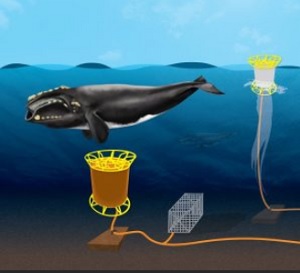
Everything you’ve heard about ‘ropeless’ fishing gear is false.
Is so-called “ropeless” fishing gear the magic bullet for the perceived problem of marine mammal interactions in California’s crab fisheries? (what about the New England lobster fishery?) Several profit-driven environmental groups, including Oceana, would like the public and the California Department of Fish and Wildlife (CDFW) to believe it is.,,, In truth, there have only been four mortalities attributed to CA commercial Dungeness crab gear since 2013, and none during the last two seasons.,,, Maine’s lobster fishery has never had a documented serious injury or mortality for any Right whale, and no entanglement since 2002, which makes this a non-problem. One of the problems with “ropeless” gear is that it’s a misleading term used by the profit-driven environmental groups to make it seem harmless. >click to read< 15:06
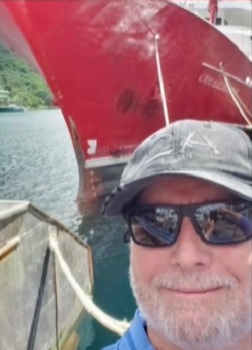
Commercial Tuna Fisherman Pete Battaglia and dozens of others working in the tuna industry are stuck in American Samoa
Battaglia is a long-time navigator in the tuna industry and runs U.S. boats out of American Samoa, which along with being a U.S. territory is also one of our country’s tuna hubs. While Battaglia and his crew were out at sea at the beginning of March, the COVID-19 pandemic led to new travel restrictions across the world. The fishermen returned to port to find customs agents in hazmat gear and commercial travel suspended to and from the island. Weeks have now turned into months and their family members fear their return could be well past Christmas. >click to read< 07:20
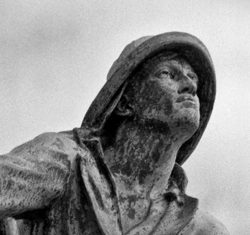
Opinion: Been a lot about the Observer Program out there lately. My question is, why are they needed?!!
When our boats come to unload their catch, NOAA people are there to report their landings, and if they caught too much haddock, cod or flounder, or other species that are not allowed, the owner could face a fine. Of course, Electronic monitoring is an alternative to that. This would show what they caught each and every tow, thus not needing an observer that many can’t afford, and second it should be a NOAA financial obligation, not placed on our fishermen. There are so few of them left. There is a lot to think about, but the bottom line is, it should be a financial obligation of the government to harvest the government required data. Thank You, Sam Parisi, Gloucester 19:15
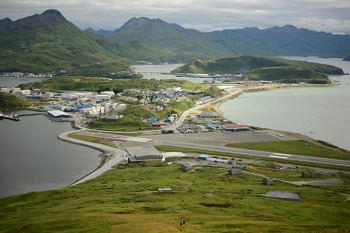
Seattle Entrepreneur and Unalaska Businessman to Start Flight Co-op Between Unalaska and Anchorage
The community of Unalaska/Dutch Harbor has been without reliable air service since a fatal plane crash on the island late last year. Now, two people are promoting a new idea that they say could help address the community’s persistent travel problems: a flight co-op to protect people flying between Anchorage and Unalaska. Their goal is to sign up 5,000 corporate clients and individuals before launching, Chaffetz said. With that many people, he said airlines that fly between Unalaska and Anchorage would be forced to listen. “By creating a membership, kind of like a Costco,,, >click to read< 17:27
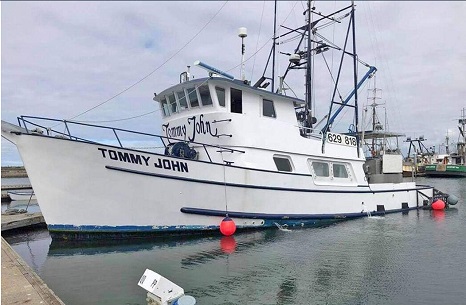
Mayday – Mayday – Mayday: Tuna boat throws curveballs to new owners
The last thing any fisherman ever wants to do is place a mayday call because their boat is sinking, but for Capt. Adam Hall and the F/V Tommy John, that’s exactly what happened late in the night on Saturday, July 25, about a 20-hour voyage off the south Washington coast. Hall and boat co-owner Greg Surgener of Southern California-based Surgener Fisheries sank big dollars into purchasing the Tommy John, moored at the time in San Diego. The duo wanted to find a boat to tuna and crab fish and felt the 50-footer was the right fit for their needs. Named for retired four-time Major League Baseball All-Star pitcher Tommy John, nicknamed “The Bionic Man,” the vessel was specifically built for tuna 40 years ago. >click to read< 08:48
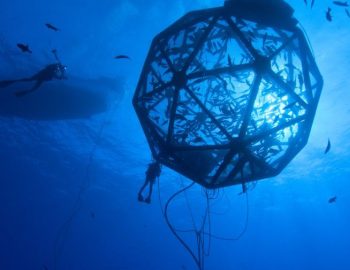
Feds select Gulf of Mexico Southern, California as potential zones for fish farming in the EEZ
The gulf joins Southern California in becoming a region for “Aquaculture Opportunity Areas,” the first two in the United States. President Donald Trump issued an executive order earlier this year outlining the concept as a way of boosting the country’s seafood industry and reducing its reliance on imported fish. The selection covers federal waters but does not identify more specific locations. “The creation of Aquaculture Opportunity Areas will foster the U.S. aquaculture industry as a needed complement to our wild capture fisheries,” said Chris Oliver, the assistant administrator for NOAA Fisheries, in a statement. >click to read< 14:14
 Commissioner Fried Welcomes NOAA Announcement – The announcement comes after Florida Agriculture Commissioner Nikki Fried sent a letter to the U.S. Commerce Secretary Wilbur Ross, asking that the department consider designating waters off Florida’s coast as an Aquaculture Opportunity Area. Echoing Commissioner Fried’s call were U.S. Senators Marco Rubio and Rick Scott, the National Aquaculture Association, the Florida Aquaculture Ass,,, >click to read<
Commissioner Fried Welcomes NOAA Announcement – The announcement comes after Florida Agriculture Commissioner Nikki Fried sent a letter to the U.S. Commerce Secretary Wilbur Ross, asking that the department consider designating waters off Florida’s coast as an Aquaculture Opportunity Area. Echoing Commissioner Fried’s call were U.S. Senators Marco Rubio and Rick Scott, the National Aquaculture Association, the Florida Aquaculture Ass,,, >click to read<
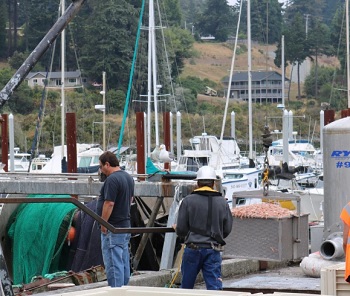
Coronavirus: Pacific Seafood reopens closed plant to process shrimp
The $9.6 million plant built by BC Fisheries LLC in 2016 closed earlier this year, leaving 30-some people without jobs and 15 local shrimp trawlers without convenient access to a buyer. But recently the Clackamas-based Pacific Seafood, which is one of the largest seafood companies in North America, took over the lease and reopened the plant to begin processing shrimp, at least for the remainder of the season. “Part of the mission of the Oregon Trawl Commission is to increase opportunities to ensure a sustainable and profitable trawl fishing industry,” Nowak said. “It’s in this spirit that we would like to recognize and thank the Port of Brookings, the state Department of Environmental Quality, Pacific Seafood and the State of Oregon for their efforts to ensure that 15 local shrimp trawlers have a buyer and processor here in our community.” >click to read< 07:27
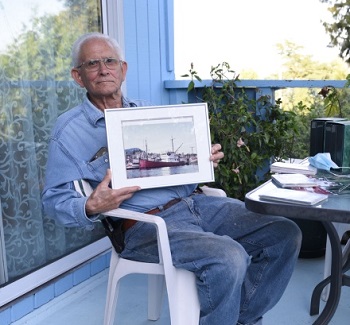
F/V Arctic Fox II remembered as ‘huge part’ of Gibson’s fishing community
As the fishing community comes to terms with the losses, a former owner remembers The Arctic Fox II’s ties to Gibsons fishing culture. It began with a cod war between England and Iceland in the 1970s. At the time Ivan Tentchoff and his wife were running an environmental summer camp. They gave children a chance to explore coastal waters from Powell River to Alaska onboard the Arctic Loon and the Arctic Fox. They were on the hunt for a larger boat to make bigger crossings. That’s how Tentchoff, now 91, ended up in the Scottish fishing town of Fraserburgh. That’s where he struck gold. >click to read< 12:00

Herrera Beutler lauds NOAA decision on sea lion removal
NOAA announced Aug. 14 that a task force had endorsed implementing the Endangered Salmon Predation Prevention Act, legislation signed into law in 2018. The administration stated that the new law amends the Marine Mammal Protection Act, allowing for removal of sea lions in a stretch of the Columbia River and its tributaries intended to cut down on predation of salmon and steelhead. With NOAA’s approval of these permits, wildlife managers can now finally take action and implement the sea lion control measure that tribes, fishermen, scientists, conservationists and local leaders have been calling for to preserve our native fish runs,” U.S. Rep Herrera Beutler >click to read< 10:46

Federal officials approve Steller and California sea lions kill program along the Columbia River
As expected, federal officials on Friday approved a program to kill more than 700 sea lions along a nearly 200-mile stretch of the Columbia River and its tributaries in an effort to protect salmon at risk of extinction. The program is a significant step-up in existing efforts, and will be in place for five years. Targeted are both Steller and California sea lions, which will be darted with lethal levels of tranquilizing drugs by authorized teams from states and tribes. >click to read< 14:13
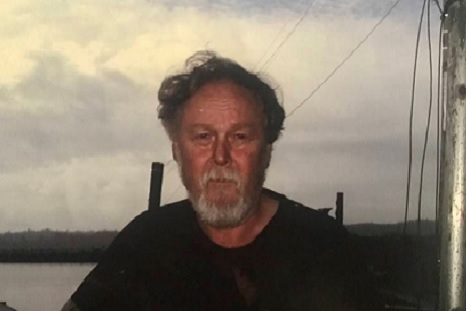
Veteran fisherman Tom Lindberg tried to save his deckhands
The daughter of the veteran Cobble Hill fisherman who died when the Arctic Fox II capsized in the waters off Washington state said her father put the deckhands’ lives ahead of his own as heavy waves crashed onto the boat in the pitch black night. Tom Lindberg, the 76-year-old skipper of the tuna troller, and another fisherman died Aug. 11 after the boat capsized about 136 kilometres offshore of Cape Flattery, which is just south of Port Renfrew. The third fisherman was found alive in a life boat by U.S. Coast Guard officers responding to the vessel’s distress call. Paula Lindberg was told there was only 20 minutes between when the mayday call was put out around 2 a.m. and when the boat went down which is “incredibly fast.” >click to read< 11:07
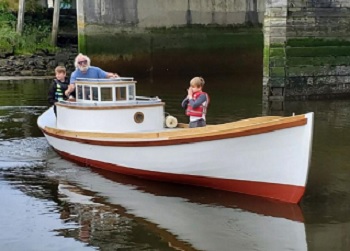
Historic fishing boat gets another chance – “an incredible piece of our region’s maritime history”
Kent Craford’s wife used to joke that she’d probably have to bury him in the old gillnet boat he bought on a whim when they were young and broke and that for years his children called “the rusty boat.” Many people’s boat dreams have sunk at the dock — to the despair of marina managers everywhere. But not the John M, Craford’s 113-year old wooden fishing boat. Yes, it nearly sank one day in 2010 when the pump failed and rainwater filled it. That was a turning point. >click to read< 07:55

SCRUB OBSERVERS ON FISHING TRIPS!
From all indications, on August 14, National Oceanic and Atmospheric Administration commercial fishing monitors will be back looking for a journey unless NOAA steps in and waives the requirement for data-collecting observers during the COVID-19 pandemic. The information human observers collect can be temporarily gathered through electronic surveillance, but a momentary waiver has to come directly through your two U.S. Senators and one U.S. Representative in Washington. Let them know as soon as possible because if you don’t email or call them now, don’t think anyone else is going to do this for you. >click to read< 08:11
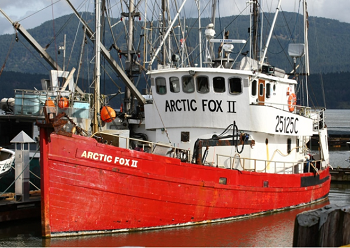
Apprehension: Young deckhands backed out of fatal F/V Arctic Fox II trip just before fishboat departed
Two men who were supposed to crew the boat decided to leave money on the table and walk away before it hit the open ocean. Raymond and Anthony Dixon, twins from the Nanaimo area, were on board the F/V Arctic Fox II as new deck hands with Captain Tom Lindberg when they sailed out of Cowichan Bay Marina on Sunday, Aug. 2. Originally, there was another deckhand, Jessie Gilbert, who had actually recruited Raymond. But the day before Raymond was due to arrive in Cowichan Bay, Gilbert had to go home sick. So Raymond recruited Anthony, who was hired immediately. It would have been the 19-year-old brothers’ first commercial fishing trip. >click to read< 06:53
Brothers sensed danger and didn’t stay on boat that later capsized – In Victoria, Dixon and his brother met the boat’s owner, Larry Teague, who told them they have to keep an eye out for boats because Lindberg’s eyesight was poor. Dixon believes Lindberg was in his early 80s. >click to read<10:04
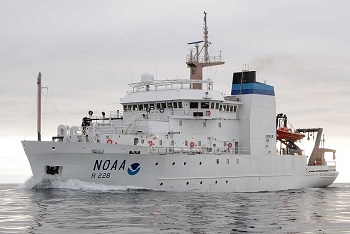
Covid-19 Transmission and Mandatory On-Board Observers
You have two Senators and one Member of Congress representing you in Washington. If you are concerned with the recent NOAA/NMFS decision to once again require their observers on board commercial fishing vessels,, you should let them know, and you should let them know ASAP, Feds the observers will be back and looking for rides on August 14, w/links,,, More on Covid-19: We know that research cruises by the R/V Bigelow have been cancelled for (at least) the rest of this year. There must be a compelling Covid-19 related reason for this, and I’d suspect for the fact that NOAA/NMFS has been making it awfully hard to get solid info on where their research vessels are or aren’t,, Captains and crew members know the people who work with them,, On the other hand, mandatory fisheries observers are about as far from necessary as one can get in this pandemic year. While they unknowingly will be putting fishermen at risk, in actuality all they will be doing will be providing government scientists with data points for them to add to data sets that in instances go back fifty years or more. By Nils Stolpe >click to read< 15:35
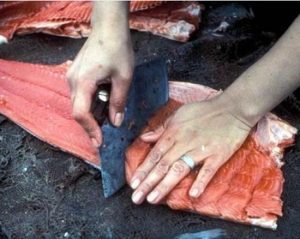
Alaska and B.C.’s salmon runs expected to be worst ever recorded
Salmon returns on the west coast look bleak this year. Alaska’s salmon returns have been so poor that some communities already are claiming fishery disasters. The socket salmon run on B.C.’s Fraser River is expected to be the worst ever recorded,, in Alaska, the Cordova City Council passed a resolution last week, asking the state to declare disasters for both the 2018 Copper River sockeye and chinook salmon runs and the 2020 sockeye, chum and chinook runs at the Copper River and Prince William Sound,, The Pacific Salmon Commission (PSC) says this year may turn out to be the worst for sockeye salmon in the Fraser River since tracking began in 1893, >click to read< 12:56






